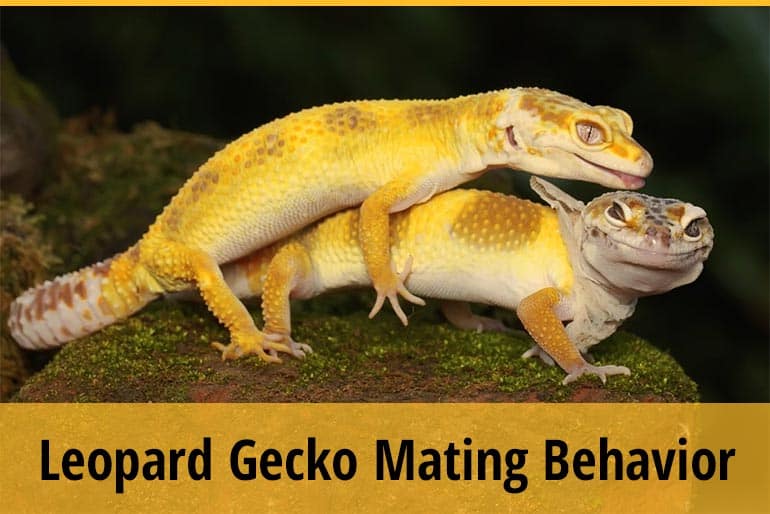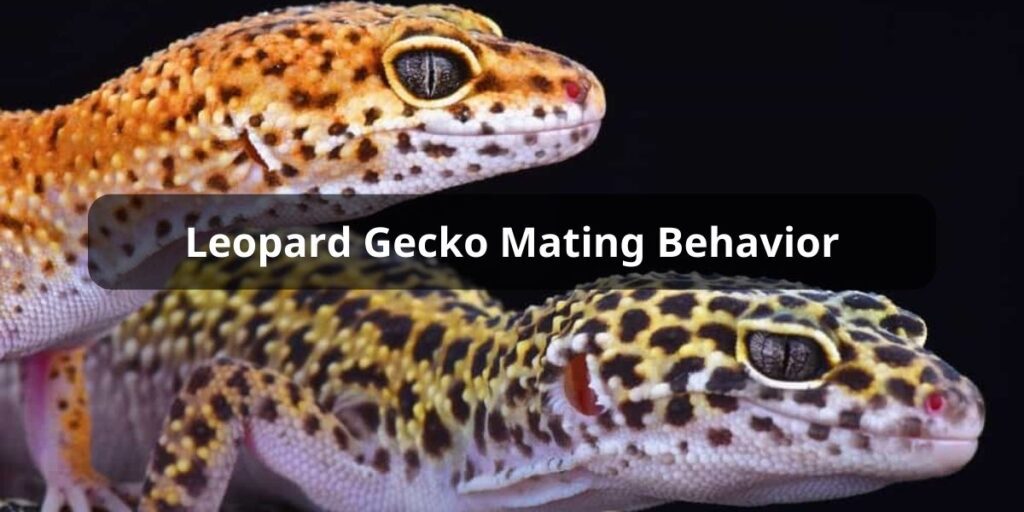Leopard geckos are one of the most popular pet lizards kept around the world. Their docile nature, easy care requirements, and wide range of morphs and colors make them an excellent reptile for beginner and experienced owners alike. Understanding leopard gecko mating behavior is important for those looking to breed their geckos responsibly. Here is a comprehensive overview of leopard gecko mating rituals and reproduction.
Leopard geckos originate from the deserts of Asia and are well-adapted to hot, arid environments. They are terrestrial, ground-dwelling geckos that become sexually mature between 8-12 months of age. The breeding season for leopard geckos typically runs from January through September, with most mating and egg-laying occurring in the spring and summer months.
Males initiate breeding by conducting rituals to entice females. Females play a more passive role but will reject advances if not ready to breed. Once a male and female have paired, the actual copulation is brief. Females ovulate in response to mating and will lay multiple clutches of two eggs every two to four weeks during the breeding season. The eggs will incubate for 30-60 days before hatching.
Below is a detailed overview of leopard gecko mating behaviors, including courtship, copulation, and egg-laying. Understanding these natural behaviors is essential for those looking to breed leopard geckos in captivity.
Leopard Gecko Courtship

Leopard gecko mating behavior begins with a ritualized courtship. Males take the active role in initiating breeding. They will engage in behaviors meant to entice females and demonstrate their fitness as a mate. Key courtship behaviors include:
- Tail Vibration: The male will vibrate his tail rapidly side-to-side to attract the female’s attention. This demonstrates the male’s strength and vigor.
- Licking: The male will lick the female’s back, neck, and cloacal region. This is meant to stimulate the female to breed.
- Circling: The male circles the female while stiffly wagging and jerking his tail. Circling demonstrates his interest and gets the female’s attention.
- Nipping: Light nips on the neck and body stimulate the female and make her receptive to mating. Hard aggressive biting is a sign she is not ready to breed.
- Mount Attempts: The male will periodically attempt to mount the female to gauge her receptiveness. A receptive female will allow mounting.
The female must give consent by assuming a mating stance for copulation to occur. She communicates disinterest by fleeing or attacking the male. Courting sessions may last several hours over multiple days before a female is ready to mate.
Copulation
Once the female signals she is ready, copulation can occur swiftly. To mate, the male will grip the folds of skin on the back of the female’s neck in his jaws. This is known as the mating grasp or bite. He will then twist his tail under the female’s, anchoring her in position.
Actual insertion only lasts 5-15 seconds. The hemipenes, which store sperm, will alternate inserting into the female’s cloaca. Once complete, the male promptly releases the female. Copulation may be repeated several times over a few hours to ensure successful fertilization.
Egg Laying and Incubation
Female leopard geckos are able to store sperm for up to one year after breeding. This allows them to lay multiple fertile clutches from one successful copulation. The first eggs are typically laid 20-40 days after mating. After that, females will lay eggs every 2-4 weeks during the breeding season.
Each clutch contains 2 eggs which are laid in a nesting site the female has excavated herself. Good nest sites retain heat and humidity well. In captivity, lay boxes with damp moss or vermiculite are provided. Once laid, eggs should be moved to an incubation container.
Leopard gecko eggs incubate best between 82-88°F with high humidity. Under these conditions, eggs will hatch after 30-60 days. The newly emerged hatchlings will be 3-4 inches long and require exceptionally small prey items like newly hatched crickets or fruit flies.
Conclusion
In summary, leopard geckos demonstrate a complex series of mating behaviors including male courtship displays, strategic female receptivity, and brief copulation. Females can store sperm to lay multiple fertile clutches in a season after just one successful breeding. Understanding these natural rituals and patterns is key for anyone looking to responsibly breed leopard geckos in captivity. Providing the proper environment, nutrition, and care is critical to supporting natural breeding and raising healthy hatchlings.
FAQs About Leopard Gecko Mating Behavior
How long does the mating process typically last for leopard geckos?
The mating process for leopard geckos can vary but usually lasts from 15 minutes to a few hours. It involves courtship, copulation, and may include several attempts over a few days if successful mating doesn’t occur immediately.
Do leopard geckos exhibit any post-mating behaviors or interactions?
After mating, male leopard geckos may guard the female, which is a common post-mating behavior. Females might display increased burrowing or nesting behaviors as they prepare to lay eggs. These behaviors can be observed during the post-mating period.
What should I consider if I plan to breed leopard geckos?
Breeding leopard geckos requires careful consideration. Ensure you have a male and female pair, provide appropriate nesting sites, temperature, and humidity conditions. Be prepared for potential egg-laying complications, and have a plan for caring for hatchlings if breeding is successful.
Are there any risks or challenges associated with leopard gecko mating?
Yes, there are risks and challenges. Mating can be physically taxing for female geckos, potentially leading to egg-binding or other complications. There is also a risk of aggressive behavior between males and females, requiring vigilant monitoring during the process.
Can you provide tips for successful leopard gecko breeding and mating behavior observation?
To ensure successful breeding, monitor temperature and humidity, provide ample hiding spots, and minimize stress. Observe their body language, such as tail-wagging and head-bobbing, which indicate receptivity. Record mating attempts and laying dates, and consult experienced breeders or reptile experts for guidance throughout the process.



